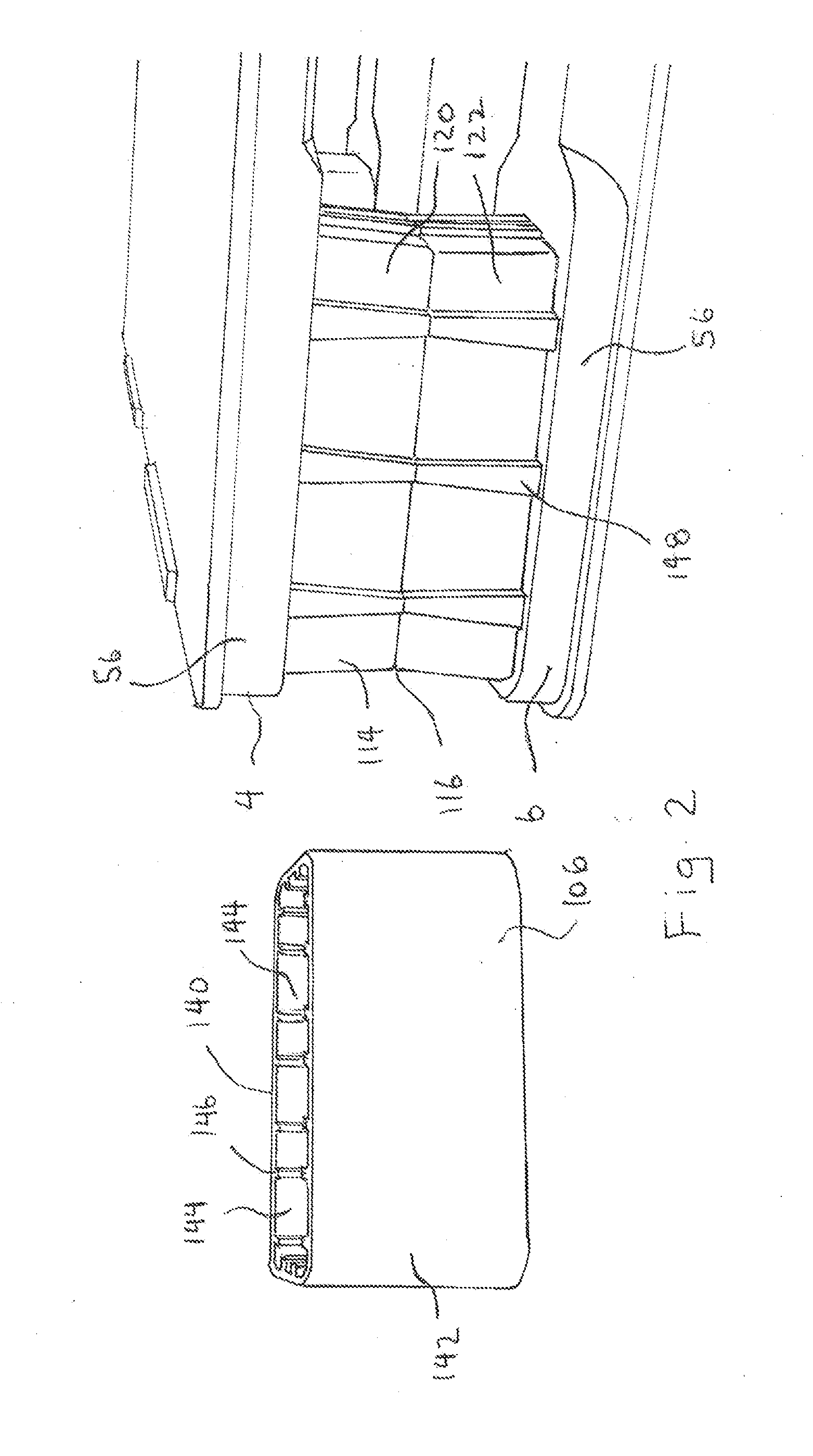Wooden pallets however fall apart due to
wear and tear in use so that wood pallet
pooling companies have to charge their customers a significant pallet rental fee that includes the cost of required repeated repair of the wood pallet for continued re-use.
The long term operating costs of a wood pallet are therefore higher due to ongoing maintenance costs than the original cost of the
long lasting plastic pallet, so that the original lower price
advantage of wood is lost to plastic.
However, with the passage of time, it has been discovered that plastic pallets are also prone to
wear and tear, presented by the effects of
delamination, punctures, cracks and the like.
These problems are not presented in wood, so plastic pallets have unique problems only recently realized.
The prior art plastic pallets have not fulfilled the promise of a maintenance free pallet.
Thus the price
advantage of plastic pallets over the long run is lost, so that wood remains the dominant material in the market to this day.
Although prior art plastic pallets are an improvement over traditional pooled wood pallets, these suffer from many unique problems that are not encountered by pooled wood pallets.
However, these plastic pallets are not surviving their intended number of trips and are suffering catastrophic damage in use.
All of the displayed defects concern the injection molded base and the fusion of the base to the deck.
The most frequent defects show separation where the upper and lower injection molded sections of the injection molded base are the fused together around the 48×40 inch perimeter.
Such
delamination is a catastrophic problem because the interior of the injection molded structure is no longer sealed against penetrating liquids, chemicals,
dirt, debris,
bacteria, insects and the like.
Secondly, the top section of the injection molded base demonstrates cracks which indicate the materials are affected by cold condition impacts.
Cracks admit additional materials into the cavities of the pallet which accumulate and add weight and corrode the steel reinforcement bars or deteriorate the performance of the RFID tags placed in the legs of the base of the exemplary pallet structure.
This lesser problem indicates the difficulty of permanently fusing together two dissimilar
plastic materials used to create the Valentinsson pallet.
In use the injection molded components of the so-called 2nd Gen pallet suffer catastrophic damage which is difficult and expensive to repair, so that the operating expenses of the exemplary plastic pallet are actually costlier than the operating expenses of wood pallets.
A fourth observed
wear and tear problem with all plastic pallets concerns fork lift,
pallet jack and pallet moving equipment related pallet damage.
When a fork lift operator impacts a plastic pallet structure supporting a 14,000-pound load on the ground with pointed fork tines because of misjudgment, the wall of the impacted plastic pallet will very likely be punctured or pierced on a direct hit or tear when grazed by the forks.
Twin sheet and injection molded leg walls cannot recover from these forces under compression.
Therefore, fork impacts under load represent a significant wear and tear problem for any pallet because a fractured or pierced pallet admits liquids and materials into the interior of the pallet, which is unacceptable.
A plastic pallet meant to weigh less than 50 pounds (tear weight) that in use weighs 65 pounds, because the interior spaces of the pallet has accumulated water within its interior spaces which has frozen as a result of been stored outside, is no longer suitable for future rental trips based upon an original equipment standard or specification.
There are other problems with prior art plastic pallets.
These
solid materials weaken the
impact strength of the resins.
Additionally, some of the materials in the
fire retardant additives are restricted by state law and there is a general concern the halogenated and other pallet materials for
fire resistance are a health and environment risk.
Many prior art plastic pallets are injection molded because despite twin sheet's superior performance in many areas, twin sheet
thermoforming has an inherent
weakness.
This is a fundamental problem because the leg pockets accumulate liquids and debris and besides the industry standards require a minimum of 85 percent deck coverage, where 100 percent is preferred (GMA Spec.
In a 48×40 inch pallet with nine leg pockets, it is impossible to comply with the requirements of industry using a twin sheet pallet
assembly with nine leg pockets.
Another problem is that a typical pooled plastic pallet, that is intended to last + / − ten years, is not easily modified to accept new tracking technology equipment.
The problem with this approach is the foaming compound is difficult to remove so it is impractical to replace the second
transponder with a third
transponder should this become necessary.
These and other problems have created the need for a new and stronger plastic pallet.
 Login to View More
Login to View More  Login to View More
Login to View More 


